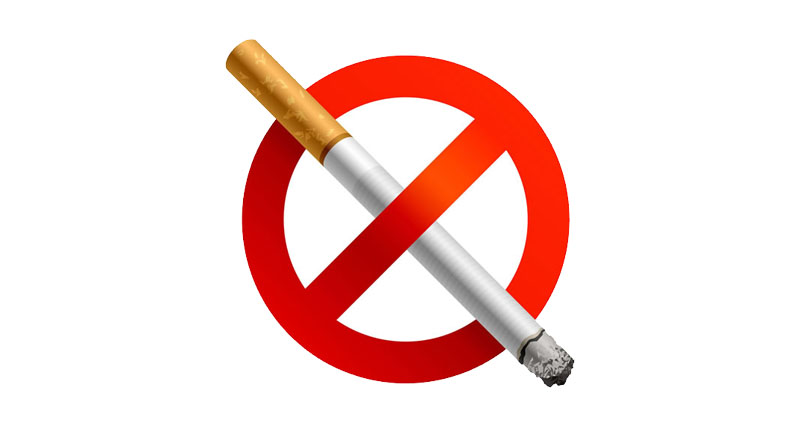The Perks of Giving up Smoking
We live in an age where the modern-day human is constantly seeking to make positive changes in their lives like taking multivitamins, choosing to walk somewhere rather than drive or simply just drinking more water to name a few.
But there is a habit that many people still find themselves, or someone they know affected by; smoking.
Smoking is something that dates back hundreds of years and is done by millions across the globe. But why is it proving so hard to overcome?
In 2019, anti-smoking campaigns and smoke free alternative methods are literally everywhere, with electronic cigarettes and vaping quickly becoming just as popular as using tobacco products, so again, why do so many people do it?
It is thought that humans have been smoking tobacco for hundreds of years, with Mayan carvings being found in Mexico that date back to around 500 AD.
Because of its natural growth in the Americas, the plant was ‘discovered’ by early migrants who began colonizing these islands in the 15th and 16th centuries. At its earliest stage, tobacco would have been chewed, smoked in pre-rolled cigarettes or through a pipe.
It wasn’t until European colonizers discovered the plant in the 17th century that its mass trade and production began, and it wasn’t until the 1800’s that the modern day pre-rolled and boxed cigarette emerged.
This paved the way for cheap mass production, which in turn led to a huge increase in the number of smokers worldwide.
The end of the 19th century and the start of the 20th was a significant era for smoking, globally. At this point it was no longer considered a luxury but an every day essential, and that’s when it exploded in popularity.
Most significantly though, the world wars during which cigarette production increased significantly in order to provide tobacco for allied troops as a morale booster, and advertising began to target women too.
The first medical reports to emerge about the dangers of smoking were published in the 1920’s, but it wasn’t until after the war that these warnings were taken seriously. It wasn’t until the 60’s and 70’s and 80’s that the government began to come down hard on advertisers and producers.
The true war on smoking began in earnest at the turn of the 21st century, when countries around the world brought in a ban on smoking in public places such as restaurants and pubs. As smoking became more anti-social, the price of cigarettes also increased hugely; this report from the NHS states that tobacco was 27% less affordable in 2015 than it was in 2005.
Between 1974 and 2017, the number of smokers in Great Britain declined from 46% to 15%. Average consumption of cigarettes has also decreased from 16 a day to 11, and 5.5% of people in 2017 said they currently used an e-cigarette or alternative.
In 2016/17 there were estimated to be 484,700 hospital admissions related to smoking, and around 77,900 deaths linked with smoking.
There are many benefits of giving up smoking and in the short term some are:
Improved lung capacity
Better circulation and blood flow
A boosted immune system
Better taste and smell
Whiter teeth
And more money in your pocket!
An ever-increasingly popular method for dealing with withdrawal symptoms is the e-cigarette, or vape as it’s more commonly known.
There are plenty of methods and forms of support to help cope with addiction and cravings when someone is trying to quit.
Available options range from simply speaking to your GP about what direction to head in, local and/or online support groups. Some people even try methods such as hypnosis.
However, the most popular methods is to use a product which contains nicotine in order to combat cravings.
here are many choices ranging from nicotine patches and gum; however the most popular choice by far is the use of an e-cigarette or vaping device.
In a 2018 study, it was found that an estimated 3.2 million adults in Great Britain currently use e-cigarettes (vape), up from 700,000 in 2012.
There are now more ex-smokers (1.7 million) who use e-cigarettes than current smokers (1.4 million). This means that over half (52%) of e-cigarette users are ex-smokers with 44% being current tobacco smokers.
The main reason given by current e-cig users as to why they used these products was in order to help them stop smoking.
Awareness of e-cigarettes is now widespread among adults. The 2018 survey found that 94% of tobacco smokers and 93% of the general population had heard of e-cigarettes. This contrasts with 2012, when 49% of adults responding to the same question said they had never heard of e-cigarettes.
In a landmark study conducted but the NHS fit was found that long-term vaping was proven to be far less harmful than smoking cigarettes.
While still containing nicotine, vapes and e-cigarettes do not contain any of the other harmful substances found in cigarette such as tar or carbon monoxide.
The study provided evidence that backed up Public Health Englands report that these smoke free alternatives can be up to 95% less harmful than regular tobacco.
Despite being vastly healthier than smoking, these e-cigarettes and other alternative methods are still not a total solution. Ultimately the goal is to try and give up consuming nicotine all together.
If you or someone you know is considering quitting or struggling to quit please visit the following for further info and support on helping make the switch.













